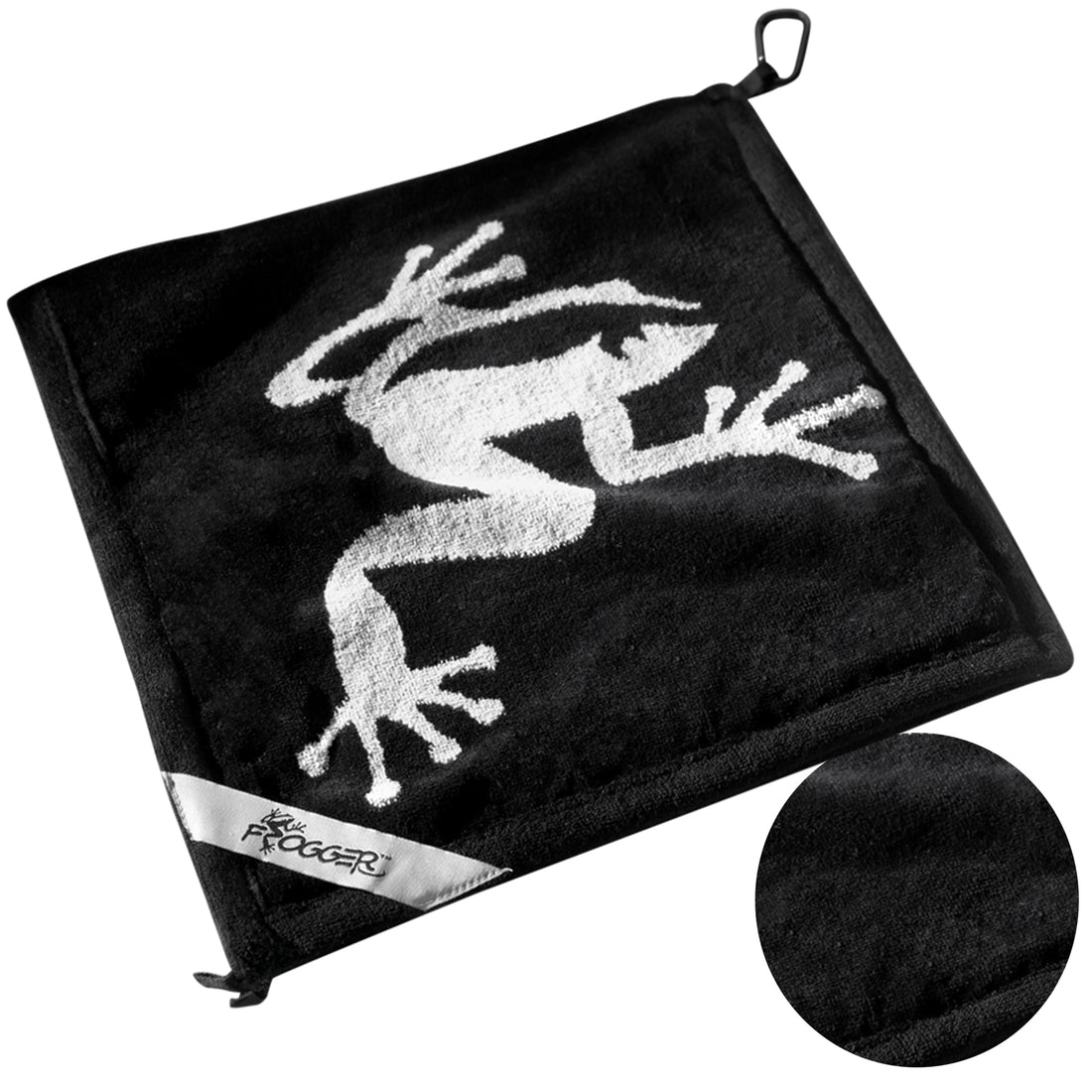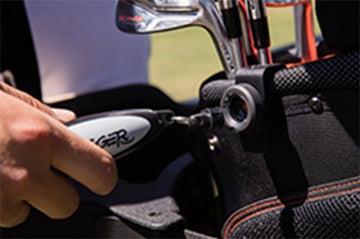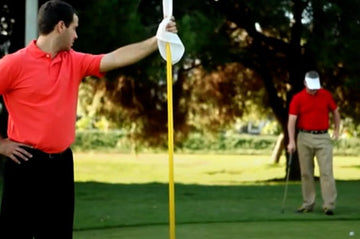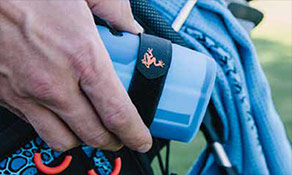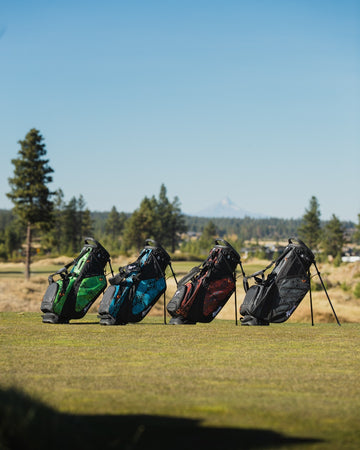Golf Tips: Wet Sand Shots
by
Jeremiah Bohannon
on
Dec 08, 2014

We will all run into the hard packed or wet sand situation at some point in our golfing adventures. The sand may be hard packed because of lack of maintenance, or it may be packed due to hard rains the night before, or possibly even the course's sprinkler system.
Previous rain or the course's sprinklers will obviously be causes of wet sand, which from a shot perspective presents the same issues as hard packed sand.
Regular Sand Shot
In a regular sand shot we are taught to open our sand wedge up and take quite a bit of sand with the ball. Depending on the distance the shot needs to carry, we may aim one inch to several inches behind the ball. The design of the sand wedge's bottom allows the club to dig in just enough, then bounce through. This keeps the club from digging in too far and stopping.
The result is that the ball comes out soft, accompanied by a hand full or two of sand.
Hard Packed or Wet Sand
The above technique does not work for hard packed or wet sand. If the player were to open up the sand wedge in those conditions, the bounce of the club and hardness of the ground would cause the club to bounce too much. The increased bounce causes the club to strike the ball with the blade.
Bladed shots are among the worst shots in golf. The ball will either fly 100 yards too far, or it may not clear the lip of the bunker and might embed.
To properly hit the hard packed or wet sand shot, only open the sand wedge slightly, or perhaps not at all. In fact, sand wedge may not even be the right club. Perhaps try a gap wedge or pitching wedge.
Try to skim the club over the top of the sand and keep the finish lower than a typical high sand shot finish. The ball will come out lower, perhaps with more spin.
 We will all run into the hard packed or wet sand situation at some point in our golfing adventures. The sand may be hard packed because of lack of maintenance, or it may be packed due to hard rains the night before, or possibly even the course's sprinkler system.
Previous rain or the course's sprinklers will obviously be causes of wet sand, which from a shot perspective presents the same issues as hard packed sand.
Regular Sand Shot
In a regular sand shot we are taught to open our sand wedge up and take quite a bit of sand with the ball. Depending on the distance the shot needs to carry, we may aim one inch to several inches behind the ball. The design of the sand wedge's bottom allows the club to dig in just enough, then bounce through. This keeps the club from digging in too far and stopping.
The result is that the ball comes out soft, accompanied by a hand full or two of sand.
Hard Packed or Wet Sand
The above technique does not work for hard packed or wet sand. If the player were to open up the sand wedge in those conditions, the bounce of the club and hardness of the ground would cause the club to bounce too much. The increased bounce causes the club to strike the ball with the blade.
Bladed shots are among the worst shots in golf. The ball will either fly 100 yards too far, or it may not clear the lip of the bunker and might embed.
To properly hit the hard packed or wet sand shot, only open the sand wedge slightly, or perhaps not at all. In fact, sand wedge may not even be the right club. Perhaps try a gap wedge or pitching wedge.
Try to skim the club over the top of the sand and keep the finish lower than a typical high sand shot finish. The ball will come out lower, perhaps with more spin.
We will all run into the hard packed or wet sand situation at some point in our golfing adventures. The sand may be hard packed because of lack of maintenance, or it may be packed due to hard rains the night before, or possibly even the course's sprinkler system.
Previous rain or the course's sprinklers will obviously be causes of wet sand, which from a shot perspective presents the same issues as hard packed sand.
Regular Sand Shot
In a regular sand shot we are taught to open our sand wedge up and take quite a bit of sand with the ball. Depending on the distance the shot needs to carry, we may aim one inch to several inches behind the ball. The design of the sand wedge's bottom allows the club to dig in just enough, then bounce through. This keeps the club from digging in too far and stopping.
The result is that the ball comes out soft, accompanied by a hand full or two of sand.
Hard Packed or Wet Sand
The above technique does not work for hard packed or wet sand. If the player were to open up the sand wedge in those conditions, the bounce of the club and hardness of the ground would cause the club to bounce too much. The increased bounce causes the club to strike the ball with the blade.
Bladed shots are among the worst shots in golf. The ball will either fly 100 yards too far, or it may not clear the lip of the bunker and might embed.
To properly hit the hard packed or wet sand shot, only open the sand wedge slightly, or perhaps not at all. In fact, sand wedge may not even be the right club. Perhaps try a gap wedge or pitching wedge.
Try to skim the club over the top of the sand and keep the finish lower than a typical high sand shot finish. The ball will come out lower, perhaps with more spin.
 We will all run into the hard packed or wet sand situation at some point in our golfing adventures. The sand may be hard packed because of lack of maintenance, or it may be packed due to hard rains the night before, or possibly even the course's sprinkler system.
Previous rain or the course's sprinklers will obviously be causes of wet sand, which from a shot perspective presents the same issues as hard packed sand.
Regular Sand Shot
In a regular sand shot we are taught to open our sand wedge up and take quite a bit of sand with the ball. Depending on the distance the shot needs to carry, we may aim one inch to several inches behind the ball. The design of the sand wedge's bottom allows the club to dig in just enough, then bounce through. This keeps the club from digging in too far and stopping.
The result is that the ball comes out soft, accompanied by a hand full or two of sand.
Hard Packed or Wet Sand
The above technique does not work for hard packed or wet sand. If the player were to open up the sand wedge in those conditions, the bounce of the club and hardness of the ground would cause the club to bounce too much. The increased bounce causes the club to strike the ball with the blade.
Bladed shots are among the worst shots in golf. The ball will either fly 100 yards too far, or it may not clear the lip of the bunker and might embed.
To properly hit the hard packed or wet sand shot, only open the sand wedge slightly, or perhaps not at all. In fact, sand wedge may not even be the right club. Perhaps try a gap wedge or pitching wedge.
Try to skim the club over the top of the sand and keep the finish lower than a typical high sand shot finish. The ball will come out lower, perhaps with more spin.
We will all run into the hard packed or wet sand situation at some point in our golfing adventures. The sand may be hard packed because of lack of maintenance, or it may be packed due to hard rains the night before, or possibly even the course's sprinkler system.
Previous rain or the course's sprinklers will obviously be causes of wet sand, which from a shot perspective presents the same issues as hard packed sand.
Regular Sand Shot
In a regular sand shot we are taught to open our sand wedge up and take quite a bit of sand with the ball. Depending on the distance the shot needs to carry, we may aim one inch to several inches behind the ball. The design of the sand wedge's bottom allows the club to dig in just enough, then bounce through. This keeps the club from digging in too far and stopping.
The result is that the ball comes out soft, accompanied by a hand full or two of sand.
Hard Packed or Wet Sand
The above technique does not work for hard packed or wet sand. If the player were to open up the sand wedge in those conditions, the bounce of the club and hardness of the ground would cause the club to bounce too much. The increased bounce causes the club to strike the ball with the blade.
Bladed shots are among the worst shots in golf. The ball will either fly 100 yards too far, or it may not clear the lip of the bunker and might embed.
To properly hit the hard packed or wet sand shot, only open the sand wedge slightly, or perhaps not at all. In fact, sand wedge may not even be the right club. Perhaps try a gap wedge or pitching wedge.
Try to skim the club over the top of the sand and keep the finish lower than a typical high sand shot finish. The ball will come out lower, perhaps with more spin.

